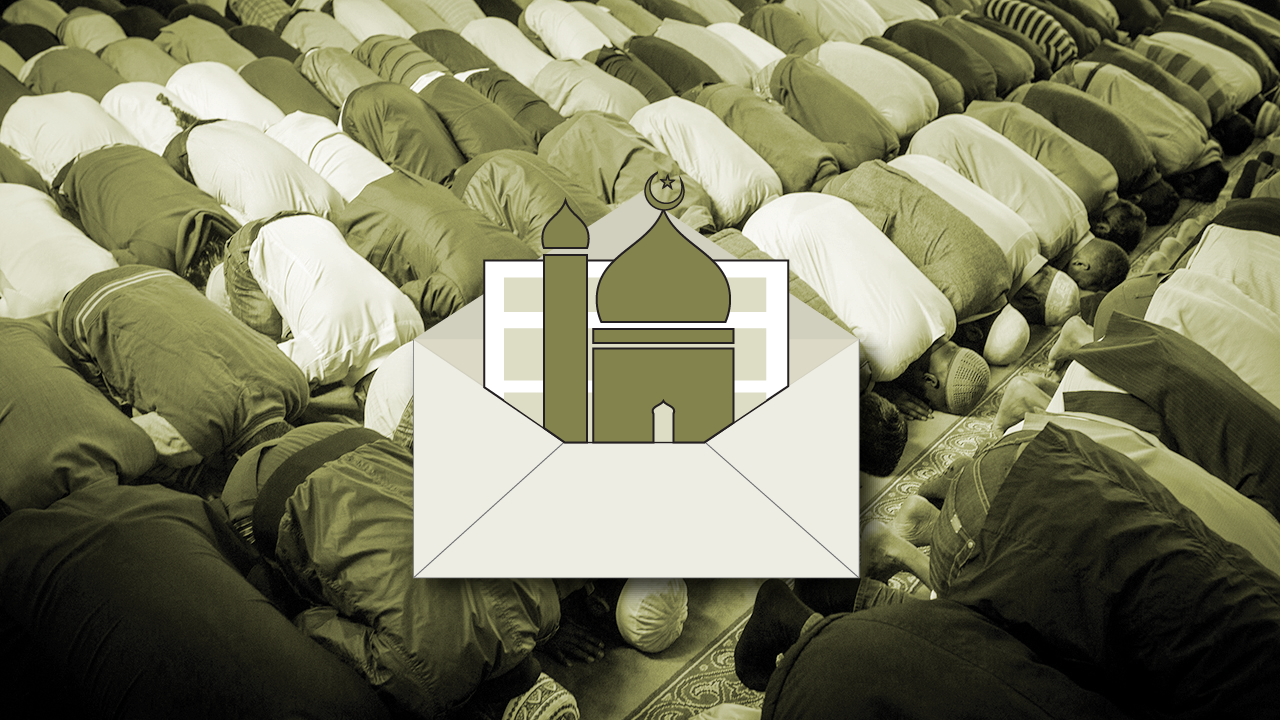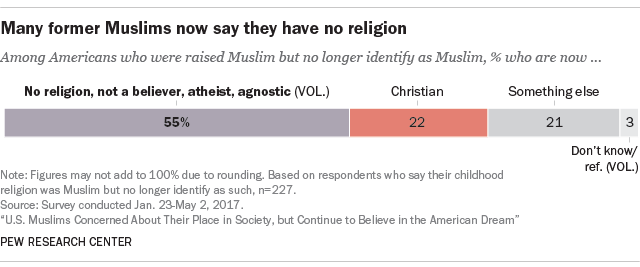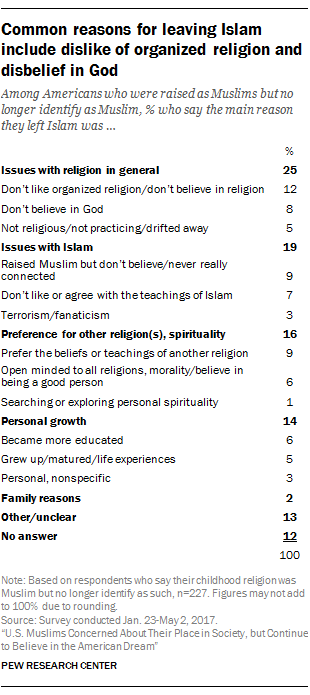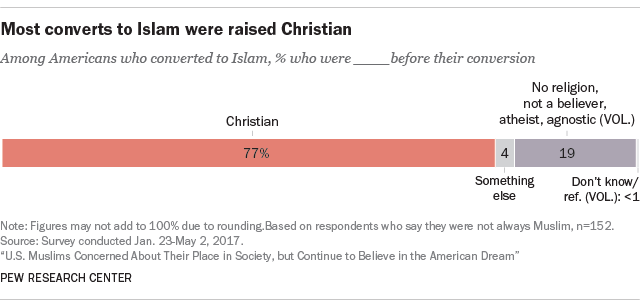Like Americans in many other religious groups, a substantial share of adults who were raised Muslim no longer identify as members of the faith. But, unlike some other faiths, Islam gains about as many converts as it loses.
[callout align=”alignright”]

Try our email course on Muslims and Islam
Learn about Muslims and Islam through four short lessons delivered to your inbox every other day. Sign up now!
About a quarter of adults who were raised Muslim (23%) no longer identify as members of the faith, roughly on par with the share of Americans who were raised Christian and no longer identify with Christianity (22%), according to a new analysis of the 2014 Religious Landscape Study. But while the share of American Muslim adults who are converts to Islam also is about one-quarter (23%), a much smaller share of current Christians (6%) are converts. In other words, Christianity as a whole loses more people than it gains from religious switching (conversions in both directions) in the U.S., while the net effect on Islam in America is a wash.


A 2017 Pew Research Center survey of U.S. Muslims, using slightly different questions than the 2014 survey, found a similar estimate (24%) of the share of those who were raised Muslim but have left Islam. Among this group, 55% no longer identify with any religion, according to the 2017 survey. Fewer identify as Christian (22%), and an additional one-in-five (21%) identify with a wide variety of smaller groups, including faiths such as Buddhism, Hinduism, Judaism, or as generally “spiritual.”
The same 2017 survey asked converts from Islam to explain, in their own words, their reasons for leaving the faith. A quarter cited issues with religion and faith in general, saying that they dislike organized religion (12%), that they do not believe in God (8%), or that they are just not religious (5%). And roughly one-in-five cited a reason specific to their experience with Islam, such as being raised Muslim but never connecting with the faith (9%) or disagreeing with the teachings (7%) of Islam. Similar shares listed reasons related to a preference for other religions or philosophies (16%) and personal growth experiences (14%), such as becoming more educated or maturing.
One striking difference between former Muslims and those who have always been Muslim is in the share who hail from Iran. Those who have left Islam are more likely to be immigrants from Iran (22%) than those who have not switched faiths (8%). The large number of Iranian American former Muslims is the result of a spike in immigration from Iran following the Iranian Revolution of 1978 and 1979 – which included many secular Iranians seeking political refuge from the new theocratic regime.


Among those who have converted to Islam, a majority come from a Christian background. In fact, about half of all converts to Islam (53%) identified as Protestant before converting; another 20% were Catholic. And roughly one-in-five (19%) volunteered that they had no religion before converting to Islam, while smaller shares switched from Orthodox Christianity, Buddhism, Judaism or some other religion.
When asked to specify why they became Muslim, converts give a variety of reasons. About a quarter say they preferred the beliefs or teachings of Islam to those of their prior religion, while 21% say they read religious texts or studied Islam before making the decision to switch. Still others said they wanted to belong to a community (10%), that marriage or a relationship was the prime motivator (9%), that they were introduced to the faith by a friend, or that they were following a public leader (9%).
In recent years, the number of American Muslims has been growing steadily, by around 100,000 annually. But the fact that the shares of people who enter and leave Islam are roughly equal suggests that conversions to and from the faith are having little impact on the group’s overall growth.
See the survey questionnaire here (PDF).

